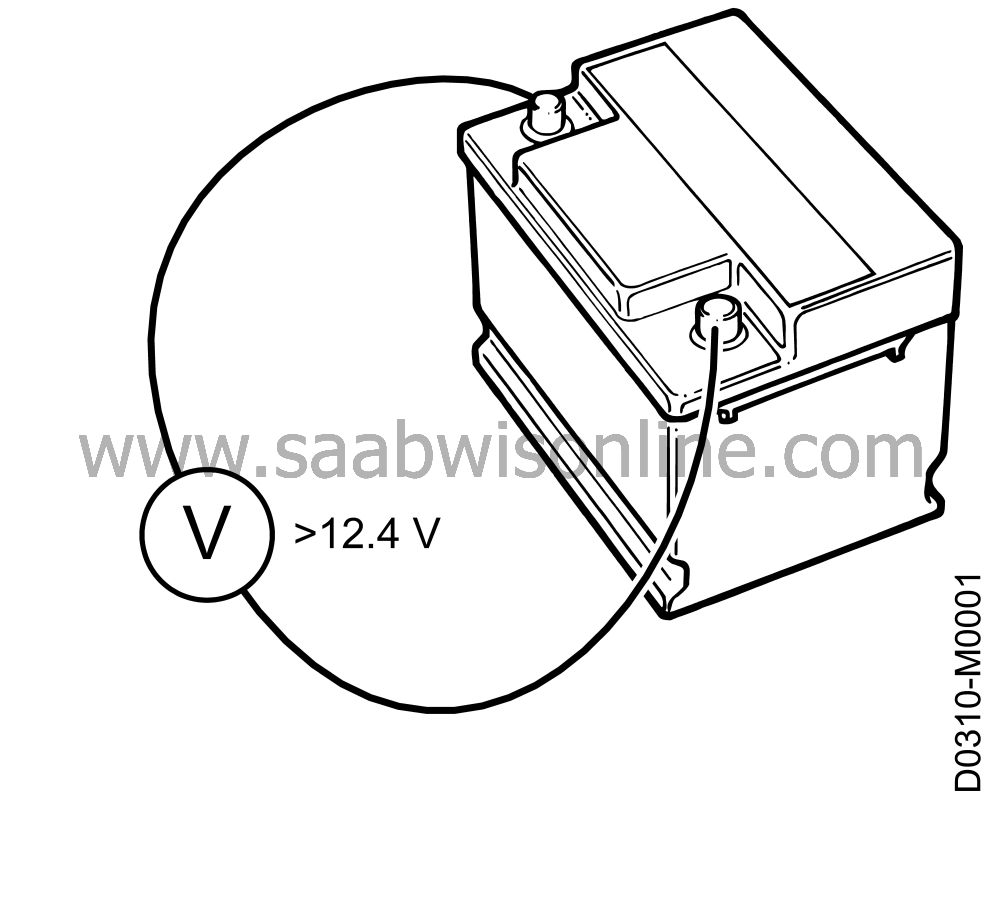PRE-RELEASE
In-storage car care
| In-storage car care |
In-storage car care is obligatory for all Saab cars at intervals of not more than 60 days until the car is sold. See Policies and Procedures (P and P).
Carry out the car care checks and confirm them with your signature on the report form. Report form, see
 .
.
In connection with the rectification of defects and deficiencies, refer to the relevant service literature and follow the prescribed procedures.
| Inspection and rectification points |
| 1. |
Check that the paint protector is intact. If it needs making good, the car must first be washed so that dust and dirt will not be enclosed. Inspect the paintwork, make a note of any damage and apply fresh paint protector.
|
||||||||||
| 2. |
Pour about two litres of petrol into the fuel tank to prevent dry running of the petrol pump.
|
||||||||||
| 3. |
Check the battery voltage.

|
|
| • |
Current consumption should be 0 A when a reading is taken.
|
| • |
Check the condition of the battery by taking a voltage reading.
|
| • |
Check the level of the electrolyte and top up to the normal level as necessary.
For further information, see Service Manual 3:1.
|
||||||||||
| 4. |
Start the engine and warm it up until the radiator fan starts.
|
|
| 6. |
Check the level of the coolant.
|
|
| 7. |
Drive the car for at least 200 metres, applying the brakes briefly and repeatedly so that the brake discs will be clean and dry.
|
|
| 8. |
Park the car facing in the opposite direction to equalize the effect of sunlight on it.
|
|
| 9. |
Open the bonnet to cool the engine down more rapidly.
|
|
| 10. |
Check and adjust the protective plastic that is out of place.
|
|
| 11. |
Make sure that: The handbrake lever is released. Manual gearbox: engage reverse gear. Automatic transmission: set the selector lever to the P position. All windows, doors and tailgate are properly closed.
|
|
| 12. |
Lock the car.
|
|
| 13. |
Check the engine bay for signs of incipient corrosion, especially on aluminium. If this is the case, treat the areas with Teroson protective wax, part no. 30 15 914. Cover with a film of wax with no surplus (10-15 µm when dry). Be especially careful with aluminium surfaces.
|
||||||||||||||||||
| 14. |
Disconnect the positive cable from the battery or remove the battery for charging.
Close the bonnet. |
|


 Warning
Warning

